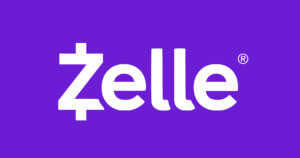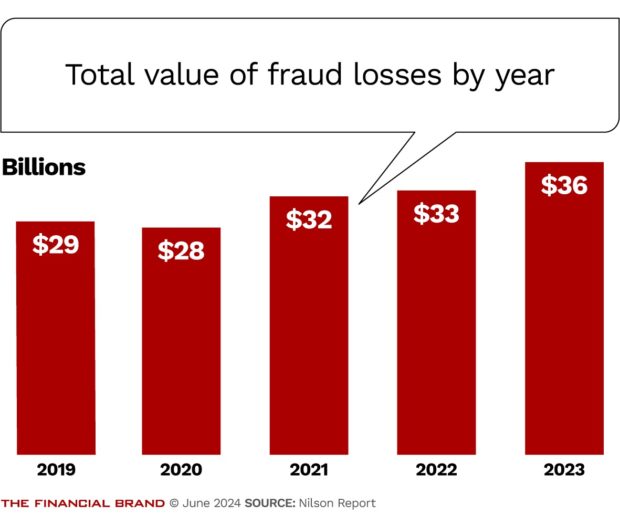Technology & Payments
July 26, 2024: Technology & Payments Articles
- 6 Ways the CFPB Wants to Keep Its Eyes on Fintech Middlemen
- Supreme Court Rulings May Shake Up Banking Entry Decisions in Fintechs’ Favor
- Join us for the next topic in our series of complimentary webinars for all members: What Comes After Chevron? on July 29, 2024, from 3:00 pm – 4:00 pm EST
- Lawmakers Say Banks Aren’t Doing Enough for Zelle Fraud Victims
- Related Reading: Homeland Security and Governmental Affairs Senate Committee Hearing: Instant Payments, Instant Losses: Zelle and The Big Banks Fail to Protect Consumers from Fraud
- Fed Cites Digital Bank Jiko Over Capital Planning Woes
6 Ways the CFPB Wants to Keep Its Eyes on Fintech Middlemen
 Clearer guidance around “rent-a-bank,” open banking and buy now, pay later will ensure more consumers benefit, Director Rohit Chopra said in remarks last week.
Clearer guidance around “rent-a-bank,” open banking and buy now, pay later will ensure more consumers benefit, Director Rohit Chopra said in remarks last week.
Suman Bhattacharyya, Banking Dive
Fintech firms continue to face scrutiny as regulators work to ensure tech intermediaries aren’t subjecting consumers to high fees, surveillance of transactions and anti-competitive activities.
Speaking in Washington at a Semafor event last week, Consumer Financial Protection Bureau Director Rohit Chopra said the activities of fintech middlemen — particularly those with data-based business models — will continue to be the subject of rigorous oversight.
“We are on the lookout for people who want to be gatekeepers and charge tolls through the whole system,” he said. “We want to see who’s exploiting, misusing, abusing data. And we also want people to build businesses on something real, not just regulatory arbitrage.”
The CFPB is watching for companies “trying to insert themselves into the middle as a must-have resource for everyone, and then totally price-gouge people,” Chopra said, adding that the phenomenon is widespread. He cited the example of credit scoring and reporting companies that take advantage of consumers’ need for credit reporting information and scores, which operate with minimal competition.
Here are six takeaways from Chopra’s remarks:
- Stronger oversight and guidance for fintechs
The rules under which fintechs operate need to be simpler and shouldn’t only benefit incumbents, Chopra argued. Clearer guidance means companies avoid a “shakedown of lawyers” as they strive to navigate uncertainty. “We inherit laws that are written by Congress,” Chopra said. “They’re often written sometimes for very specific circumstances; sometimes they’re written just very, very broadly, and we have to deal with that.” The CFPB, he said, has long had an issue with “rent-a-bank” partnership models. Read more
Supreme Court Rulings May Shake Up Banking Entry Decisions in Fintechs’ Favor
Michele Alt, The Financial Brand
 Analysis: The ink is barely dry on four Supreme Court decisions that intersect in a way that could clear the way for fintech applicants to obtain charters and deposit insurance as well as Federal Reserve master accounts. It’s early days, but lawyers are already figuring how to use the change in the Court’s stance.
Analysis: The ink is barely dry on four Supreme Court decisions that intersect in a way that could clear the way for fintech applicants to obtain charters and deposit insurance as well as Federal Reserve master accounts. It’s early days, but lawyers are already figuring how to use the change in the Court’s stance.
In recent years, federal banking agencies have approved very few new bank applications and the Federal Reserve has been reluctant to grant master accounts to nontraditional banks.
These situations — and potentially more — may be about to change in light of four recent Supreme Court decisions that together have seriously curbed the powers of administrative agencies. That would be a boon for fintechs and other nontraditional applicants seeking entry into the banking system.
Capsules of the Four Cases that Will Amend Banking Regulation
Here’s a quick rundown on the four cases the Court decided:
- In Loper Bright v. Raimondo, the Court ended the deference to federal agency expertise that originated with its 1984 decision in Chevron v. Natural Resources Defense Council. This will trigger lawsuits claiming the agencies have exceeded their authority or abused their discretion in adopting various rulemakings or guidelines.
- Because a second decision, in Corner Post Inc. v. Board of Governors of the Federal Reserve System, effectively eliminated the statute of limitations on federal agency rulemaking, even decades-old rules could be challenged.
- In the third case, Cantero v. Bank of America, the Court determined that an evidentiary hearing is required to determine the applicability of any state or local law or ordinance to nationwide banking operations.
- And in the fourth case, SEC v. Jarkesy, the Court determined that an agency must seek civil money penalties from alleged wrongdoers through the courts rather than through its internal administrative enforcement processes.
Taken together, the Supreme Court’s message to the agencies in the cases couldn’t be clearer: We do not trust you to interpret and apply the law. It doesn’t matter how long you’ve been doing so. And your internal processes are no substitute for judicial ones. Read more
 Join Us on July 29, 2024, from 3:00 pm – 4:00 pm EST
Join Us on July 29, 2024, from 3:00 pm – 4:00 pm EST
NASCUS is pleased to announce the next topic in our series of complimentary webinars for all members: What Comes After Chevron?
Lawmakers Say Banks Aren’t Doing Enough for Zelle Fraud Victims
Claire Williams, American Banker
 Sen. Richard Blumenthal, D-Conn., the chairman of the Senate Permanent Subcommittee on Investigations, said banks should fully reimburse victims of fraud on Zelle, the culmination of a monthslong investigation into the payment app.
Sen. Richard Blumenthal, D-Conn., the chairman of the Senate Permanent Subcommittee on Investigations, said banks should fully reimburse victims of fraud on Zelle, the culmination of a monthslong investigation into the payment app.
Senate Democrats, in a report led by Blumenthal and in an accompanying hearing late Tuesday afternoon, argued that banks who own and operate peer-to-peer payment network Zelle should do more to help fraud and scam victims.
“While this problem affects all peer-to-peer apps, nowhere is it more problematic than on Zelle, which is the largest of them,” Blumenthal said. “Sending a payment on Zelle is fast, easy and irreversible. Zelle and the big banks who own it know that its speed and convenience makes it a target, and they’re well aware that every day some of their customers will be hurt.”
Representatives of JPMorgan Chase, Wells Fargo and Bank of America — the three largest banks that share ownership of Zelle’s parent company Early Warning Services, suggested that lawmakers should also focus on the criminals who are defrauding customers.
The Electronic Fund Transfer Act, a decades-old law, requires that banks and other payment providers investigate and reimburse unauthorized funds transfers. But Blumenthal and other Democrats on the committee said some of the most rampant fraud problems with Zelle involve authorized fund transfers where victims are tricked into sending money to scammers who might pose as a bank employee or use an AI-generated voice scheme. Read more
- Related Reading: Homeland Security and Governmental Affairs Senate Committee Hearing: Instant Payments, Instant Losses: Zelle and The Big Banks Fail to Protect Consumers from Fraud
Fed Cites Digital Bank Jiko Over Capital Planning Woes
Dan Ennis, Banking Dive
 The central bank is requiring the startup, which bought a bank in 2020, to submit a liquidity risk management plan with steps to diversify its funding sources and enhanced stress test scenarios.
The central bank is requiring the startup, which bought a bank in 2020, to submit a liquidity risk management plan with steps to diversify its funding sources and enhanced stress test scenarios.
The Federal Reserve cited digital bank Jiko last week over “significant deficiencies” the San Francisco Fed found in capital planning, cash flow, liquidity, strategic planning and earnings — particularly at the institution’s holding company — during an October 2023 supervisory inspection.
The Fed is requiring Jiko, within 60 days, to submit a written plan detailing how the bank’s board will effectively control and supervise its financial condition. That includes measures to strengthen risk oversight and improve the “quality, accuracy, comprehensiveness and granularity” of the data it includes in financial reports, the central bank said.
Jiko also must, within 30 days, write a plan establishing short- and long-term goals meant to improve the company’s condition, as well as detail how the board and senior management intend to achieve them, according to the order.
In the same time frame, Jiko must submit a liquidity risk management plan that includes steps the bank will take to diversify its funding sources, details enhanced liquidity stress test scenarios and pledges periodic independent review and evaluation of each part of its liquidity risk management process.
Jiko also must, within 30 days, submit a written plan on how it aims to maintain sufficient capital. That will include a detailed description of how the bank assesses capital adequacy and a discussion of any expected changes to Jiko’s business plan that would have a material impact on the bank’s capital adequacy or liquidity. Read more
July 19, 2024: Technology & Payments Articles
- Recent Supreme Court Decisions Could Significantly Impact the Payments Industry
- How a Technology Startup Fills Credit Risk Gaps for Cannabis Businesses
- Regulators are Ratcheting Up Data Privacy Oversight. How are Bank Marketers Responding?
- Facebook Ads for Windows Desktop Themes Push Info-Stealing Malware
Recent Supreme Court Decisions Could Significantly Impact the Payments Industry
Jeremy M. McLaughlin, Gregory N. Blase, Andrew C. Glass, Joshua Durham of K&L Gates – FinTech Law Watch; National Law Review
 The Supreme Court issued two decisions at the end of its term that will significantly alter how federal courts review challenges to federal regulations. The decisions could have a significant impact on the highly regulated payments industry.
The Supreme Court issued two decisions at the end of its term that will significantly alter how federal courts review challenges to federal regulations. The decisions could have a significant impact on the highly regulated payments industry.
In Corner Post v. Board of Governors of the Federal Reserve System, the Court clarified the time within which a party may bring suit against an agency for harm caused by final agency actions. The Administrative Procedure Act (APA) sets forth a 6-year statute of limitations for bringing such a suit. The Court held that the right of action under the APA “accrues”—that is, the limitations period starts to run—only when the plaintiff suffered the alleged harm rather than the date of the agency’s final action.
The Corner Post case is significant to the payments industry because it involves a challenge to Regulation II, implementing the Durbin Amendment and setting the maximum interchange fee permissible for debit cards. In disposing of Corner Post, the Court remanded the case so that the plaintiff may continue its challenge to the regulation. The plaintiff asserts that the rate set by Regulation II is higher than what was authorized under the statute.
In Loper Bright Enterprises v. Raimando, the Court overturned the 40-year-old Chevron doctrine. Chevron had directed federal courts to defer to federal agency interpretation of ambiguous statutory language in certain circumstances. Under Loper Bright’s new holding, a court reviewing an agency’s final action is directed to exercise “independent judgement” in deciding whether the agency acted within the statutory authority afforded by Congress. The Court also instructed that “when a particular statute delegates authority to an agency consistent with constitutional limits, courts must respect the delegation, while ensuring that the agency acts within it.” Although courts may give “careful attention to the judgment” of agencies, they no longer must defer to an agency’s legal conclusions about ambiguous language. Read more
How a Technology Startup Fills Credit Risk Gaps for Cannabis Businesses
Christopher Buchanan, American Banker
 Cannabis retailers usually do not have an extensive debt record when applying for credit, creating a niche that CTrust is trying to fill with a specialized score to inform lending. CTrust’s recently launched Cannabis Trust Score, or CTS, considers financial data as well as ongoing regulatory and operational changes that affect the cannabis industry.
Cannabis retailers usually do not have an extensive debt record when applying for credit, creating a niche that CTrust is trying to fill with a specialized score to inform lending. CTrust’s recently launched Cannabis Trust Score, or CTS, considers financial data as well as ongoing regulatory and operational changes that affect the cannabis industry.
Banks and credit unions have long avoided cannabis businesses because of the uncertain legal environment — cannabis is still illegal on the federal level and in some states, and banks are subject to different state laws and regulations regarding the type of cannabis that a retailer is selling. But as more financial institutions approach the cannabis market, there’s a potential market for firms that can provide data that improves lending decisions.
“We’re hoping that these institutions will view us as a trusted third-party nonaffiliated objective data source that is able to provide the intelligence they need to build their loan policies,” said Dotan Y. Melech, CEO of CTrust.
Cannabis businesses share traits with more conventional businesses that are considered in both the CTS and traditional credit scores, including revenue, inventory and fiscal history. However, Melech said the CTS also considers “assets, structure and character,” of a cannabis-related business when formulating a score, providing a more comprehensive analysis of cannabis-specific businesses.
In an email, Will Bowden, CEO of Michigan-based Grasshopper Farms, said that his cannabis farm had challenges obtaining loans, which prompted it to seek out private fundraising and credit unions as primary lenders. Read more
Regulators are Ratcheting Up Data Privacy Oversight. How are Bank Marketers Responding?
Joey Pizzolato, The Financial Brand
Federal and state regulators demand that banks collect, store and use consumer data responsibly — forcing bank marketers to adapt their processes, increasing transparency in how data is used and being more deliberate in obtaining consumer consent.
As digitization becomes more prevalent, bank marketers have access to troves of consumer data to help them personalize the customer experience.
But state and federal regulators have taken note and are ratcheting up consumer data privacy requirements for banks and financial institutions, putting a particular emphasis on how banks collect, store, protect and use consumer data.
Increased regulatory oversight, coupled with the forthcoming phase-out of the web cookie, is forcing bank marketers to adapt their processes and procedures to a new era where consent is king and transparency in how — and where — the data is used and shared is more crucial than ever before.
Unpacking State and Federal Data Privacy Regulations
In financial services, several U.S. regulatory bodies set data privacy standards and provide frameworks and guidelines that financial institutions must follow to ensure the privacy and protection of consumer data in their marketing efforts, says Anna Kooi, partner and national financial services leader at Milwaukee, Wis.-based advisory and accounting firm Wipfli. Read more
Facebook Ads for Windows Desktop Themes Push Info-Stealing Malware
Lawrence Abrams, Bleeping Computer
 Cybercriminals use Facebook business pages and advertisements to promote fake Windows themes that infect unsuspecting users with the SYS01 password-stealing malware.
Cybercriminals use Facebook business pages and advertisements to promote fake Windows themes that infect unsuspecting users with the SYS01 password-stealing malware.
Trustwave researchers who observed the campaigns said the threat actors also promote fake downloads for pirated games and software, Sora AI, 3D image creator, and One Click Active.
While using Facebook advertisements to push information-stealing malware is not new, the social media platform’s massive reach makes these campaigns a significant threat.
Facebook advertising
The threat actors take out advertisements that promote Windows themes, free game downloads, and software activation cracks for popular applications, like Photoshop, Microsoft Office, and Windows.
These advertisements are promoted through newly created Facebook business pages or by hijacking existing ones. When using hijacked Facebook pages, the threat actors rename them to suit the theme of their advertisement and to promote the downloads to the existing page members. Read more
July 12, 2024: Technology & Payments Articles
- What Happens When Your Bank Isn’t Really a Bank and Your Money Disappears?
- Traditional Banks Go Digital as Neobanks Face Regulatory Heat
- Why Buy Now, Pay Later Debt Could Become a Problem for the U.S. Economy
- Neobanks See an Opportunity as Banks Move Away from Free Services
What Happens When Your Bank Isn’t Really a Bank and Your Money Disappears?

For unsuspecting depositors of online financial start-ups, the unraveling of a little-known intermediary has separated them from their life savings.
Rob Copeland, New York Times
For close to a century, putting your savings into a federally insured bank has been a sure thing: If the institution fails, up to $250,000 of your money will be protected.
What if it isn’t anymore?
The promise of bank insurance — a tenet of U.S. consumer protection since the Great Depression — is now being tested by a crisis swirling around online-only lenders with hundreds of millions of dollars of deposits between them. Customer accounts have been frozen, preventing people from cashing out their life savings. Most depositors have little clue where their money has gone, and whether they will get any of it back.
The turmoil was set off this spring with the bankruptcy of Synapse Financial Technologies, the kind of company you’ve probably never heard of unless you suffered through all the fine print of your account statements. It operated banking software for fast-growing online lenders with names like Juno, Yieldstreet and Yotta.
Backed by some of Silicon Valley’s bigger venture capitalists, the start-ups offer accounts that charge lower fees and pay far higher interest rates than traditional brick-and-mortar banks. Their slick websites advertise insurance from the Federal Deposit Insurance Corporation, the U.S. agency that pledges to pay back lost funds.
Unlike stodgy brick-and-mortar institutions, this group’s pitch is that banking can be downright fun. “Play Games. Win Big,” says Yotta, which features a lottery-like system that boosts returns for some lucky customers.
This model is increasingly popular — especially among 20- and 30-somethings — and legal. Read more
Traditional Banks Go Digital as Neobanks Face Regulatory Heat
As regulators draw a bead on neobanks, traditional financial institutions are acting more like neobanks.
PYMNTS.com
 Open banking looks set to transform financial services in the United States, and the approach, in contrast to what has been seen in Europe, is market-driven rather than government-driven. A spate of announcements has served to highlight digital innovations that are changing the ways accounts can be opened and bundled with other offerings that go beyond direct deposit.
Open banking looks set to transform financial services in the United States, and the approach, in contrast to what has been seen in Europe, is market-driven rather than government-driven. A spate of announcements has served to highlight digital innovations that are changing the ways accounts can be opened and bundled with other offerings that go beyond direct deposit.
In other words, the age-old practice of walking into branches to get onboarded into a bank’s client base or take advantage of new services added on to new accounts is becoming increasingly reliant on digital workflows. Back in October, the Consumer Financial Protection Bureau noted that its proposed open banking rule would make it easier to switch accounts, as consumers permission and control their data.
Stage Set for More Digital Innovation
The stage is seemingly set for individuals and businesses to establish more digitally based relationships with their financial institutions.
As detailed in PYMNTS Intelligence’s most recent “How the World Does Digital” report, across 60,000 consumers studied in 2023 — a sample representative of about 800 million people living in 11 countries — 42% engage with online banking. A total of 46.8% do their banking through mobile means. About two-thirds of consumers used an app on their phone for banking (mobile banking, 68.6%) or from their desktop with a browser (online banking, 66.6%) at least monthly.
Banks are examining and re-examining their tech stacks to more fully tap into instant payments, digital account openings and embedded finance, among other initiatives. In a panel discussion with PYMNTS in June, Galileo Head of Product Strategy Michael Haney said composable banking is “becoming an imperative to improve the operational efficiency at these legacy banks and be more responsive to client needs and industry trends.” The new generation of platforms is based on MACH principles: microservices, APIs, cloud and headless. Read more
Why Buy Now, Pay Later Debt Could Become a Problem for the U.S. Economy
Charlotte Morabito, CNBC
 Buy now, pay later options are becoming more accessible to consumers. A quarter of Americans surveyed in April 2024 said they used buy now, pay later services in the past 12 months, according to a recent report from NerdWallet.
Buy now, pay later options are becoming more accessible to consumers. A quarter of Americans surveyed in April 2024 said they used buy now, pay later services in the past 12 months, according to a recent report from NerdWallet.
The number of buy now, pay later loans increased nearly 1,100% between 2019 and 2021, according to data compiled by the Consumer Financial Protection Bureau. The rapid growth has some analysts concerned because where there are loans, there is debt — but exactly how much debt is still unclear.
A December 2023 report from Wells Fargo concluded that the “Buy Now, Pay Later market may be small now, but if we don’t know how fast it’s growing, it logically follows that we simply cannot know when it will be a problem.” “We’ve often referred to this as phantom debt, where it’s sort of flying under the radar and not really something that anybody has a good grasp on,” Shannon Grein, one of the authors of the December note, told CNBC.
“The notion of this phantom debt being out there is just not true,” said Penny Lee, president and CEO of the Financial Technology Association, or FTA. The FTA is a trade group that represents four of the largest buy now, pay later providers: Klarna, Afterpay, Zip and PayPal. “We know from publicly reported information how many folks are taking out loans and how many of them default. And it’s a very, very low number.”
Grein emphasizes that she does not think the debt is so bad that it will explode, but rather the concern is around not being able to track how much is out there and how many consumers are behind on payments. Read more
Neobanks See an Opportunity as Banks Move Away from Free Services
PYMNTS.com
 The arguably natural consequences of fee caps and limits on debit interchange — and the uncertainty of the regulatory climate — are now showing up with an anticipated pullback by banks on traditionally “free” services and products.
The arguably natural consequences of fee caps and limits on debit interchange — and the uncertainty of the regulatory climate — are now showing up with an anticipated pullback by banks on traditionally “free” services and products.
Amid that pullback, there’s opportunity for neobanks, the digital-only upstarts that have been seeking to make inroads against their larger brethren, to take some market share. But that’s only if they craft business models that are less dependent on interchange/transaction volumes in an environment where consumers are fickle about how much they’re spending, and where.
As reported by The Wall Street Journal on Friday (July 5), JPMorgan has noted that potential new rules that trim overdraft fees and card fees will make it more expensive for banks to provide checking accounts and other offerings — so new fees are going to be levied on consumers.
Broad Changes, Broad Impact
“The changes will be broad, sweeping and significant,” said Marianne Lake, CEO of consumer and community banking at JPMorgan, per the Journal. “The people who will be most impacted are the ones who can least afford to be, and access to credit will be harder to get.”
As PYMNTS has documented, the Consumer Financial Protection Bureau has sought to lower the typical late fees charged by card issuers from an average of $32 to — in most cases — $8. Elsewhere, the Supreme Court ruled last week that a suit by merchants group challenging debit card interchange fees can proceed. JPMorgan is not alone here, of course. All manner of banks may seek to offset the loss of fee income in other ways. And there’s some historical indication, already, that consumers wind up missing out on innovations and rewards they value when new regulations are rolled out. Read more
June 28, 2024: Technology & Payments Articles
- OPINION: We Need a Plan to End QR Codes in Fintech
- Trending: Banking-as-a-Service Upheaval Will Stabilize
- Apple Kills Off Its Buy Now, Pay Later Service Barely A Year After Launch
- Judge Rejects $30B Visa, Mastercard ‘Swipe Fee’ Settlement
OPINION: We Need a Plan to End QR Codes in Fintech
David Birch, Forbes
 Earlier this year The Federal Trade Commission (FTC) issued a warning about the “growing abuse” of QR codes and it is certainly the case that QR crime is growing. So given that today is the 50th anniversary of the first barcode transaction, perhaps we should start thinking about what will come next.
Earlier this year The Federal Trade Commission (FTC) issued a warning about the “growing abuse” of QR codes and it is certainly the case that QR crime is growing. So given that today is the 50th anniversary of the first barcode transaction, perhaps we should start thinking about what will come next.
Golden Anniversary
Yes it was fifty years ago today, on 26th June 1974, that the first swipe of a Universal Product Code (UPC) standard black and white stripes barcode occurred at a Marsh’s Supermarket in Troy, Ohio. (It was for a 67-cent pack of Wrigley’s Juicy Fruit gum, by the way).
Twenty years on from that, in 1994, Mr. Masahiro Hara got tired of having to scan six or seven barcodes on every box of parts that zoomed past him on the assembly line at the Toyota car parts factory where he worked. He couldn’t help but wonder why they were still using those limited capacity 1970s barcodes when there was so more data that needed to be read. After studying a game of Go, he came up with the two-dimensional barcodes that we now know as the QR Code.
Twenty years on and in 2014, QR codes were being used for all sorts of things and Mr. Hara was awarded the Europen Inventor Awards “Popular Prize” at which point he said that that QR codes would likely only last about a decade before they were replaced by something more sophisticated. Read more
Trending: Banking-as-a-Service Upheaval Will Stabilize
PYMNTS.com
The Banking-as-a-Service (BaaS) model is under pressure right now.
 Synapse declared bankruptcy, while Evolve Bank and Trust was issued a cease-and-desist order, which in part requires the company to get approval from the Federal Reserve to set up any new FinTech partnerships.
Synapse declared bankruptcy, while Evolve Bank and Trust was issued a cease-and-desist order, which in part requires the company to get approval from the Federal Reserve to set up any new FinTech partnerships.
Ingo Payments Chief Revenue Officer Lydia Inboden told PYMNTS in an interview that the BaaS industry might be going through a period of upheaval — but there’s long-lived staying power. Inboden’s take is that while Synapse doesn’t represent a systemic shutdown of BaaS, it also doesn’t represent a one-off event, but rather a confluence of different scenarios that shed light onto an overall picture.
“These incidents highlight the vulnerabilities in different business models,” she said for the “What’s Next in Payments” series on BaaS. Regulators are just now creating additional frameworks governing how FinTechs — and partnerships with financial institutions — should be governed, she said.
A shakeout of at least some players is looming, said Inboden. The models that have traditionally been in place — the commoditizing of the bank charter, the disintermediation of the bank from the FinTech program, which she called the “marketing arm for consumers … that’s where we’re starting to see things break down.”
Only a few years ago, in the early days of BaaS, there were maybe a half dozen sponsor banks that focused on money movement and card issuance. We’re at 30-plus sponsor banks, and 76% of banks are now saying some form of FinTech partnership is where they see their future growth. Read more
Apple Kills Off Its Buy Now, Pay Later Service Barely A Year After Launch
Ken Sweet, Associated Press
 Apple is discontinuing its buy now, pay later service known as Apple Pay Later barely a year after its initial launch in the U.S., and will rely on companies who already dominate the industry like Affirm and Klarna.
Apple is discontinuing its buy now, pay later service known as Apple Pay Later barely a year after its initial launch in the U.S., and will rely on companies who already dominate the industry like Affirm and Klarna.
It’s an acknowledgement from a company known for producing hit products that building a financial services business from scratch as Apple has been doing for several years is difficult and highly competitive.
Apple Pay Later launched with fanfare in March 2023 as a way for iPhone customers to split purchases of up to $1,000 into four equal payments with no fees or interest. The service was Apple’s answer to the growing popularity of buy now, pay later services globally, and considered a sizeable threat to companies like Klarna, Affirm and others.
But Apple Pay Later was only available where Apple Pay was accepted whereas the other buy now, pay later companies had deeply integrated themselves into millions of merchant websites. Read more
Judge Rejects $30B Visa, Mastercard ‘Swipe Fee’ Settlement
Taylor Giorno, The Hill
 A federal judge Tuesday rejected a $30 billion antitrust settlement between Visa, Mastercard and a select group of retailers that was decried by the larger industry. Visa and Mastercard, which control a combined 80 percent of the credit card network market, agreed in March to limit interchange fees they charge retailers who accept their card.
A federal judge Tuesday rejected a $30 billion antitrust settlement between Visa, Mastercard and a select group of retailers that was decried by the larger industry. Visa and Mastercard, which control a combined 80 percent of the credit card network market, agreed in March to limit interchange fees they charge retailers who accept their card.
As part of the preliminary agreement, which was subject to approval by the judge, the credit card giants agreed to roll back so-called swipe fees by at least 4 basis points for at least three years and cap their fees at 2023 levels for the next five years.
The full order appears to be sealed, but according to the docket entry, “the Court finds that it is not likely to grant final approval to the Settlement and accordingly denies Plaintiffs’ motion for preliminary settlement approval.”
“As we noted earlier this month, we are disappointed by this development. We believe the settlement presented a fair resolution of this long-standing dispute, most notably by giving business owners more flexibility in how they manage their card acceptance activities,” Seth Eisen, senior vice president of communications at Mastercard, told The Hill.
Eisen also said Mastercard would pursue other options to resolve the long-standing legal matter. Read more
June 21, 2024: Technology & Payments Articles
- OPINION: Fintech Needs to Grow Up, and Quick, to Survive
- Business Owners Increasingly Worry About Payment Fraud
- Visa Preps for U.S. Pay-By-Bank Services
- What Does Upcoming Regulation Mean for The Payments Sector?
OPINION: Fintech Needs to Grow Up, and Quick, to Survive
James Lichau, The Hill
 The fintech startup funding ecosystem has changed significantly over the past 24 months, creating an entirely new rulebook for companies chasing investor capital. Plans to scale at all costs will no longer win over investors, so fintech founders need to show a path to smart, sustainable, and ultimately profitable growth.
The fintech startup funding ecosystem has changed significantly over the past 24 months, creating an entirely new rulebook for companies chasing investor capital. Plans to scale at all costs will no longer win over investors, so fintech founders need to show a path to smart, sustainable, and ultimately profitable growth.
Prior to 2022, fintech startups were exploding. The pandemic fueled visions of agile, mobile financial services. Low interest rates meant that investors were chasing returns by deploying large amounts of capital into fintechs, focused primarily on scaling quickly.
Startups of all kinds were a huge beneficiary, with 2021 shattering all records for startup financings and 2022 setting the all-time mark for second place.
But after inflation spiked, so did interest rates. And as the banking system teetered briefly with the collapse of Silicon Valley Bank and First Republic Bank, venture capital firms slammed their checkbooks shut. Funding for startups plunged more than 50 percent as investors grew more cautious. Many companies were simply left for dead by their investors.
That conservatism in turn shut down the market for mergers and acquisitions, dramatically shifting the startup capital conveyor belt, as paths to successful exits diminished. Mid-market fintechs in particular were suddenly stranded with no obvious place to turn for help. Read more
Business Owners Increasingly Worry About Payment Fraud
Mae Andersen, Associated Press
 Small businesses are increasingly concerned about payment fraud.
Small businesses are increasingly concerned about payment fraud.
That’s according to a small business survey from regional bank KeyBank. Nearly 2,000 small-to-medium size business with annual revenue of less than $10 million were surveyed.
The top concern among survey participants was payment fraud of various types. Forty-four percent were worried about unauthorized transactions or unauthorized electric fund transfers; 37% were concerned about identity theft; 28% said malware and ransomware attacks were their biggest concern; and 27% were worried about phishing and email scams.
“With the introduction of new technology over the last several years, small businesses are some of the many that have fallen victim to fraudulent activity,” said Mike Walters, President of Business Banking at KeyBank. He stressed the importance of owners having a plan in place to combat fraud.
Aside from fraud, the survey found that the top three anticipated economic challenges in coming months include high overhead costs, delayed payments from clients or customers, and fluctuating revenue. But businesses remain confident in their ability to weather challenges, with 65% of small business owners saying they feel confident they could fund their operating expenses for one month with their cash reserves if an unexpected need arose.
Small business owners’ “resilience is a testament to years of weathering financial uncertainty, and with their confidence remaining strong, they’re able to power through the last leg of inflation and keep themselves on track for economic growth,” Walters said.
Visa Preps for U.S. Pay-By-Bank Services
Lynne Marek, Banking Dive
The card network is focused on “stubborn categories” where large account-to-account payments have taken hold, such as in healthcare.
Dive Brief:
-
- Card network giant Visa is preparing to offer pay-by-bank services in the U.S. following its extension of such services in Europe by way of its 2022 acquisition of the open banking firm Tink, which enables banks, merchants and fintechs to move money.
- Visa has refined the Tink service, initially rolled out in Europe, and it’s gearing up to launch in the U.S. now with some pilot customers, Visa Chief Product and Strategy Officer Jack Forestell said at an investor conference last week.
- “We’ve been working behind the scenes to create the foundations for deploying it here,” Forestell said at JPMorgan Chase’s global technology, media and communications conference on May 21. “That includes bank connectivity, that includes agreements with banks and processors to make sure that we’ve got high-quality ability to authenticate customers and link back into them. We signed some pilot customers and now we’re ready to go, and launch a pay-by-bank service.”
Dive Insight:
A spokesperson for Visa didn’t immediately respond to a question about when the card network’s pay-by-bank services would start in the U.S.
While Visa’s business has long turned on its card services, the San Francisco-based company is increasingly branching out to offer other types of money transfer services, seeking to complement its credit, debit and prepaid card offerings. Read more
What Does Upcoming Regulation Mean for The Payments Sector?
FinExtra
 Moderating the panel discussing the upcoming PSD3, PSR and IP regulations, Daniel Hellmann, director, risk advisory, payments at Deloitte spoke with Simone Del Guerra, head of central institutions & international sales at Nexi Group; Nuno Epifânio, policy officer – retail financial services at the European Commission; Kevin Flood, director – payments ecosystem strategy at FIS; and David Malley, payment industry engagement lead at NatWest.
Moderating the panel discussing the upcoming PSD3, PSR and IP regulations, Daniel Hellmann, director, risk advisory, payments at Deloitte spoke with Simone Del Guerra, head of central institutions & international sales at Nexi Group; Nuno Epifânio, policy officer – retail financial services at the European Commission; Kevin Flood, director – payments ecosystem strategy at FIS; and David Malley, payment industry engagement lead at NatWest.
Before diving into the panel discussion, Hellmann asked the audience what theme of the upcoming regulation has the highest priority for their institutions. Matching the key theme of the conference, 79% of respondents stated that instant payments is the clear priority.
Picking up on the poll result, Hellmann turned to Epifânio first, who gave a detailed overview from the European Commission’s perspective on what has been happening in the regulatory landscape. Epifânio explained that, while he cannot say much that the audience wasn’t already aware of, the European Commission is working together with the council and cabinet in drafting updated versions of the PSR and PSD3 proposals. “Regarding the [European] council, we just finished the last meeting and are preparing the progress reports on the PSR and PSD3.”
Adding to Epifânio’s updates, Del Guerra explained that they are working together to ensure readiness for instant payments. He noted that instant payments are a big opportunity in the market and key to survival for SMEs, so his priorities are working together to develop solutions and value added services in that space. Read more
June 14, 2024: Technology & Payments Articles
How Credit Unions Are Playing David Against Industry Goliaths
PYMNTS.com
 Regardless of a credit union’s size, members expect digital-first capabilities that can compete with what for-profit financial institutions (FIs) offer. While many CUs are rising to the innovation challenge, there are differences across the CU landscape. To measure CUs’ current and planned innovations, PYMNTS Intelligence developed the Innovation Readiness Index (IRI). Scores indicate how well CUs’ current products, features, and planned innovations align with what members want, and the products and features are linked to higher satisfaction levels.
Regardless of a credit union’s size, members expect digital-first capabilities that can compete with what for-profit financial institutions (FIs) offer. While many CUs are rising to the innovation challenge, there are differences across the CU landscape. To measure CUs’ current and planned innovations, PYMNTS Intelligence developed the Innovation Readiness Index (IRI). Scores indicate how well CUs’ current products, features, and planned innovations align with what members want, and the products and features are linked to higher satisfaction levels.
On average, credit unions earned an IRI score of 44.2 out of 100. This indicates that the average CU’s current and future portfolio matches members’ preferences approximately 44% of the time. In contrast, the most innovative CUs, or top performers, average an IRI score of 65.
 PYMNTS Intelligence data shows smaller credit unions are punching above their weight. Seventeen percent of CUs with less than $1 billion in assets are top performers. These smaller CUs are 35% more likely to be top performers than those with more than $5 billion in assets. This indicates that CU size does not necessarily correlate with high performance. In fact, smaller CUs are finding their own path to innovation.
PYMNTS Intelligence data shows smaller credit unions are punching above their weight. Seventeen percent of CUs with less than $1 billion in assets are top performers. These smaller CUs are 35% more likely to be top performers than those with more than $5 billion in assets. This indicates that CU size does not necessarily correlate with high performance. In fact, smaller CUs are finding their own path to innovation.
These are some findings from the “2024 Credit Union Innovation Readiness Index,” a PYMNTS Intelligence and Velera (formerly PSCU/Co-op Solutions) collaboration. The report examines how CUs can reap the benefits of digital innovation to gain members and reduce churn. The index is based on two surveys. First, a survey of 200 CU executives from March 7 to April 2 explored CUs’ current product and feature offerings and their plans for future innovation. Second, a census-balanced survey of 4,551 U.S. consumers from Feb. 29 to April 8 investigated which products and features consumers want and expect from CUs. Read more
How to Build a Chatbot: Lessons from Bank of America, Klarna, and Lili
Rabab Ahsan, Tearsheet
-
-
- Everything from the UX, to the scope of a chatbot can impact how meaningful customers find interacting with a digital assistant.
- While larger companies are able to heavily involve their own product and software development teams in building a chatbot, smaller firms in the industry should keep their focus narrow, find the right partners, and ensure they are responding to how customers are engaging with their chatbot.
-
 Building chatbots that add value to the customer experience is hard. Mostly because incorrect design decisions can make the customer feel confused about who they are speaking to (computer or human) or frustrated, if they feel like they aren’t getting what they want.
Building chatbots that add value to the customer experience is hard. Mostly because incorrect design decisions can make the customer feel confused about who they are speaking to (computer or human) or frustrated, if they feel like they aren’t getting what they want.
So there is a strong case to be made that chatbots can hurt customer experience, but we have also recently seen a growing number of financial industry firms deploy chatbots and implement them well.
So what enables a chatbot experience to go from making the customer spam “I want to speak to a human” to actually feeling like they are being assisted?
1) Focus on the task: A lot of chatbots never really evolve beyond the Q&A realm and help automate tasks. However, some of the better chatbots out there like Bank of America’s Erica are quite adept at solving basic tasks like sending money, locking/unlocking a debit card, or overviewing spending habits. What really allows Erica to stand out is how it steps beyond the text-based approach and provides the customer with relevant charts and images when appropriate like in the case of keeping track of finances. The magic is in the UX expanding and contracting depending on the task at hand.
2) Know what and who you are designing for: One of the more recent debuts in the chatbot realm comes from Klarna, which powers its digital assistant through OpenAI. While the agent covers most of the run-of-the-mill tasks associated with a chatbot in the ecommerce space like checking on refunds, the standout features are its ability to explain and breakdown transactions, as well as provide support in multiple languages. Read more
Tap to Cash Lets You Pay by Touching iPhones
Brian Heater, TechCrunch
 Apple’s WWDC 2024 keynote was packed, including a number of key new updates for iOS 18. One of the more interesting additions is Tap to Cash, which is more or less what it sounds like, letting users pay for things by tapping together a pair of iPhones.
Apple’s WWDC 2024 keynote was packed, including a number of key new updates for iOS 18. One of the more interesting additions is Tap to Cash, which is more or less what it sounds like, letting users pay for things by tapping together a pair of iPhones.
As the name also suggests, the feature is effectively an outgrowth of Apple Pay’s longstanding Tap to Pay feature. Similarly, the new addition likely uses the device’s NFC functionality. Apple notes that the feature transfers money without having to share any personal info — a nice added privacy element.
Apple isn’t the first to bring this feature to market, but one wonders what effects this feature will ultimately have on standalone payment device/platforms like Square.
The company also announced the ability to customize icons, as well as a new password manager app.
How Fintech Lenders Can Help Capture Small Business Opportunity
Jake Osborne, FinTech Nexus
a Since 2021, U.S. entrepreneurs have submitted five million new business applications per year, according to the U.S. Census Bureau. And in 2023, the number of new small business formations increased by nearly 9% compared to the previous year, suggesting that the growth of the small business sector shows no signs of abating. This creates a massive opportunity for fintech lenders.
Since 2021, U.S. entrepreneurs have submitted five million new business applications per year, according to the U.S. Census Bureau. And in 2023, the number of new small business formations increased by nearly 9% compared to the previous year, suggesting that the growth of the small business sector shows no signs of abating. This creates a massive opportunity for fintech lenders.
When seeking a loan, small businesses will often look first to their depository bank. That’s natural when you consider that a relationship of trust is already in place.
Further, the depository bank has a lot of data on the small business. This allows the bank to conduct outbound marketing – a banker may anticipate a small business’ need for credit even before the owner does – and can create a smoother process as the loan moves through the system.
Fintechs, however, have an opportunity to approach small businesses from a different angle. The best way to do this is by offering a superior lending experience, which could include a simpler application process, faster decisioning and funding, and a more flexible credit box that enables the approval of candidates that were declined by their depository bank.
From equipment loans to working capital credit lines, the opportunities are substantial in the small business market, but fintech lenders must have safeguards in place and do their due diligence using the most up-to-date technology and methods. As of February 2024, small business default rates have increased for 18 months straight, according to Equifax Commercial trends data. Lenders need the best available information to pursue a high volume of loans that also fit within their risk parameters.
Tech tools evolving quickly
Providing an improved customer experience while managing risk requires embracing technology. Luckily, fintech lenders have a greater array of data and analytics resources available to them than ever before. These tools can help better identify quality leads and securely vet and onboard new loans. They can also assist with business verification; provide comprehensive risk scores that assess business viability; and aggregate and consolidate data from many sources, as well as leverage alternative data such as merchant commercial data. Read more
June 7, 2024: Technology & Payments Articles
What’s Next for Embedded Finance? A New Realism
 The embedded finance gold rush is waning, thanks to mixed results and intensifying regulatory scrutiny. But a recent report suggests how it can still be an important driver of growth for banks, if pursued with discipline and focus.
The embedded finance gold rush is waning, thanks to mixed results and intensifying regulatory scrutiny. But a recent report suggests how it can still be an important driver of growth for banks, if pursued with discipline and focus.
McKinsey & Company/ The Financial Brand
The report: Embedded finance: The choices and trade-offs for U.S. Banks
Why we picked it: High-profile failures and a torrent of consent orders have raised questions about the future viability of the embedded finance and BaaS models. It’s time for a sober but balanced appraisal.
Executive Summary
Embedded finance presents both opportunities and risks for U.S. banks. By partnering with non-financial brands and platforms, banks can expand distribution and access new customer segments with relatively low costs. However, embedded finance also risks ceding customer relationships and product commoditization. The optimal strategy depends on a bank’s size, distribution footprint, customer base, and products. Smaller banks can leverage embedded finance for deposits with minimal cannibalization risk. Regional and segment-focused banks can extend lending products through partnerships. Large diversified banks face higher risks but can capitalize on specialized capabilities like credit decisioning at scale.
Key Takeaways
- Banks must navigate the embedded finance trend carefully, weighing distribution gains against potential revenue losses.
- Six potential strategic postures enable different approaches based on a bank’s strengths and risk tolerance.
- Smaller banks can safely pursue deposit partnerships, while larger banks should focus on differentiated lending capabilities.
- Partnering with software vendors/marketplaces is higher risk but allows banks to reach new customer segments.
- Building in-house “challenger” offerings can replicate the seamless embedded finance experience.
What we liked about it: The report is direct and precise in its recommendations for specific institution types and does not shy away from looking hard at the risks. Read more
California Digital Bank Reaches $1 Billion Deposit Mark in Six Months
John Reosti, American Banker
 Jenius Bank is starting to pay dividends for its parent, Tokyo-based Sumitomo Mitsui Banking Corp. Six months after introducing its high-yield savings account, Jenius has reached $1 billion of deposits.
Jenius Bank is starting to pay dividends for its parent, Tokyo-based Sumitomo Mitsui Banking Corp. Six months after introducing its high-yield savings account, Jenius has reached $1 billion of deposits.
Jenius operates as the digital division of SMBC’s 62-year-old Los Angeles-based subsidiary, SMBC MANUBANK. It began operations in June 2023 with personal loans as the inaugural product. Since then, Jenius has originated more than $700 million. The savings account, with its 5.25% yield, has caught on equally quickly, President John Rosenfeld said.
“With both products, we kind of rolled them out slowly, to make sure that everything worked as intended,” Rosenfeld said in an interview. “We listened to our customers. We watched, we waited and when we saw things were going well … we kind of turned up the volume by opening the marketing doors, making ourselves more prominent in various places.”
While Jenius’ new customers are, no doubt, attracted by the rate it offers, the company is working to develop stronger bonds. Consumers increasingly are decentralizing their financial lives, Rosenfeld said. They’re open to a long-term relationship with a digital bank, even as they leave their primary checking account parked at another institution. Going forward, they’ll have the option of tapping Jenius for personal loans and — soon — credit cards.
“We’re working on other products as we speak,” Rosenfeld said. “Don’t be surprised when you see your first credit card from Jenius Bank, or your checking account from Jenius Bank or other types of loans from Jenius Bank. … The long-term vision is to create a bank [offering] a full suite of products that does things a little better than most.” Read more
Fraud is Rising. Are Your Cardmembers Protected?
Elan Credit Card / The Financial Brand
 Sophisticated fraud attacks are more difficult to detect and can lead to greater losses. Although data suggests that financial institutions have successfully thwarted more basic attempts — which are no longer working as effectively — they must ensure that the proper protections are in place to guard against new and evolving fraud methods.
Sophisticated fraud attacks are more difficult to detect and can lead to greater losses. Although data suggests that financial institutions have successfully thwarted more basic attempts — which are no longer working as effectively — they must ensure that the proper protections are in place to guard against new and evolving fraud methods.
As guardians of sensitive cardmember and account data, financial institutions running credit card programs must monitor cybersecurity trends closely to protect cardmembers.
Perhaps not surprisingly, credit card and cardmember information are a key target for cybercriminals due to their high value, and data confirms credit cards are one of the most reported fraud incidents.
In 2023, global fraud losses exceeded $36 billion and the Nilson Report forecasts global losses from card fraud to total $397.4 billion over the next 10 years. From 2022 to 2023, fraud losses increased by over $3 billion continuing an upward trend over the last three years.
Sophisticated attacks are more difficult to detect and can lead to greater losses. Although data suggests that financial institutions have successfully thwarted more basic attempts — which are no longer working as effectively — they must ensure that the proper protections are in place to guard against new and evolving fraud methods. Read more
The Biggest Fintech Trends in The Next 10 Years
Bernard Marr, Forbes
 If a week is a long time in politics, then ten years is an eternity in the world of technology. I often write about tech trends that will be relevant in the near to mid-term, as these are most likely to be useful to my business clients. But sometimes, it’s interesting to look a bit further ahead.
If a week is a long time in politics, then ten years is an eternity in the world of technology. I often write about tech trends that will be relevant in the near to mid-term, as these are most likely to be useful to my business clients. But sometimes, it’s interesting to look a bit further ahead.
Of course, it’s far harder to guess what will be important in ten years than what will be on the agenda over the next 12 months. But by extrapolating current trends we can still come up with some interesting ideas.
So, here’s what I believe will be the hottest topics of conversation around financial technology when 2035 is just around the corner rather than a dot on the distant horizon. Some are exciting, and some are more than a little scary – but all are real possibilities.
Human intervention will be greatly reduced as these autonomous systems increasingly manage back and front-office services. Financial services institutions will offer hyper-personalized services to customers based on an intimate understanding of their individual circumstances. This will increase access to finance and investment opportunities for many currently under-served segments of the population. However, ethical concerns over privacy, data protection and the potential dangers of systemic bias being magnified by AI will be more pressing than ever. Read more
May 31, 2024: Technology & Payments Articles
Pay-by-Bank Solutions Signal New Era of Payments
PYMNTS.com
 Solutions in search of problems rarely scale — something especially true when it comes to payments, where the focus remains on enhancing user experience and efficiency. With that focus in mind, PYMNTS sat down with Trustly Vice President of Enterprise Growth Ross McFerrin to hear his thoughts on the key drivers of payments modernization for the series “What’s Next in Payments: Payments Modernization.”
Solutions in search of problems rarely scale — something especially true when it comes to payments, where the focus remains on enhancing user experience and efficiency. With that focus in mind, PYMNTS sat down with Trustly Vice President of Enterprise Growth Ross McFerrin to hear his thoughts on the key drivers of payments modernization for the series “What’s Next in Payments: Payments Modernization.”
“The payments industry is constantly evolving, and when you look at the U.S. in a very card-dominated market, you’re seeing a material shift right now,” McFerrin said. He cited open banking, changing consumer preferences, and technological advancements including the rise of artificial intelligence as driving this shift.
While open banking is not a new concept globally, the potential for its upcoming regulatory adoption in the United States could demarcate a new era as banks are mandated to provide secure access to their data to third-party service providers, facilitating more integrated and user-friendly financial services.
As open banking regulations mature and faster payment systems become more prevalent, McFerrin emphasized that the landscape should expect a broader adoption of seamless, real-time payment solutions that create “very tangible benefits” for both businesses and end-users.
This regulatory shift will reshape how financial data is accessed and used, fostering a more competitive and innovative environment for payment solutions. Read more
More Neobanks Are Becoming Mobile Networks
Paul Sawers, TechCrunch
mobil Nubank is taking its first tentative steps into the mobile network realm, as the NYSE-traded Brazilian neobank rolls out an eSIM (embedded SIM) service for travelers. The service will give customers access to 10GB of free roaming internet in more than 40 countries without having to switch out their own existing physical SIM card or eSIM.
Nubank is taking its first tentative steps into the mobile network realm, as the NYSE-traded Brazilian neobank rolls out an eSIM (embedded SIM) service for travelers. The service will give customers access to 10GB of free roaming internet in more than 40 countries without having to switch out their own existing physical SIM card or eSIM.
The launch comes shortly after news first emerged that Brazil’s National Telecommunications Agency (ANATEL) had quietly greenlit plans for Nubank to become a mobile virtual network operator (MVNO) in partnership with wireless giant Claro. While that plan remains in the early stages and Nubank hasn’t confirmed any of the launch details (the company also declined to comment for this article), we can now confirm that it’s at least tiptoeing into the mobile network sphere — a growing trend within the fintech fraternity.
From neobanks to neo-MVNOs
Neobanks — a new breed of financial institution that serve as digital-native challengers to established banking incumbents — follow in the footsteps of traditional banks by offering ancillary services to target new customers, such as budgeting tools, data and spending insights, and easy access to the stock market. While neobanks have surged in popularity, so has the MVNO (mobile virtual network operator) market, driven by the rise of eSIM, the cloud and the proliferation of third-party software that makes all-digital distribution strategies a cinch. Read more
Five Things to Watch as Synapse Bankruptcy Impact Shakes Up FinTechs
PYMNTS.com
 At this writing, on Tuesday (May 28), the ripple effects of Synapse’s bankruptcy keep rippling. But with each filing, with the reports that customers can’t retrieve their money, that sponsor banks and other FinTechs have walked away from relationships with the funds … and even that other firms are facing existential threat, there’s one theme that’s emerging:
At this writing, on Tuesday (May 28), the ripple effects of Synapse’s bankruptcy keep rippling. But with each filing, with the reports that customers can’t retrieve their money, that sponsor banks and other FinTechs have walked away from relationships with the funds … and even that other firms are facing existential threat, there’s one theme that’s emerging:
The interconnectedness of it all. At almost every level, the banking-as-a-service (BaaS) model may be sorely tested.
Less than two years ago, as detailed in this space, Synapse, which among other offerings provided U.S. checking accounts to clients, had been eyeing expansion in Latin America and India. Back in 2019, and in previous years, the company had raised $33 million in a Series B funding round that was led by Andreessen Horowitz and existing investors Trinity Ventures and Core Innovation Capital.
Fast forward to April of this year, and the company filed for Chapter 11 bankruptcy, struck a deal to be acquired by TabaPay, and then the $9.7 million deal to be bought out was gone seemingly as quickly as it had materialized.
Court filings note that Synapse exists as “one of the first, if not the first, tech company to pioneer a Banking as a Services (Baas) platform for fintechs and Partner Financial Institutions which have agreements … to efficiently interface each other to allow for transactions (i.e., the buy and sell) of their financial products and services to the fintechs’ end users.” Read more
UK Payments Regulator Criticizes Visa and Mastercard Over Fee Hikes
Competition Policy International
 The U.K.’s Payment Systems Regulator (PSR) has released a critical report highlighting the lack of significant service improvements following fee increases imposed by Visa and Mastercard on retailers. The interim report, issued on Tuesday, indicates that the two U.S.-based card giants, which dominate 95% of U.K. card transactions, have not faced effective competition.
The U.K.’s Payment Systems Regulator (PSR) has released a critical report highlighting the lack of significant service improvements following fee increases imposed by Visa and Mastercard on retailers. The interim report, issued on Tuesday, indicates that the two U.S.-based card giants, which dominate 95% of U.K. card transactions, have not faced effective competition.
Over the past five years, Visa and Mastercard have raised their scheme and processing fees by over 30% in real terms, according to the PSR. This increase has resulted in an estimated £250 million in additional annual costs for U.K. businesses. Despite these substantial fee hikes, the PSR found “little evidence” that the quality of services provided by Visa and Mastercard has significantly improved.
The PSR is contemplating requiring Visa and Mastercard to offer greater transparency in their U.K. operations and to justify their pricing decisions. The regulator noted difficulties in obtaining adequate data from the card schemes, which currently prevents it from imposing price caps on their fees. “The issues we have encountered gathering suitable data from the card schemes mean that it is not an appropriate response, at the present time, to the harm we have identified,” the report stated. Read more
May 23, 2024: Technology & Payments Articles
-
-
- Sen. Blumenthal Says Financial Institutions Must Take Responsibility for Zelle Fraud
- Podcast: How Affirm Built the Buy Now Pay Later (BNPL) Industry, with President Libor Michalek
- Google Pay Lets Customers Ditch CVVs for Biometrics
- Offline Digital Payments to Deal with Financial Exclusion of the Non-Digital World
-
Sen. Blumenthal Says Financial Institutions Must Take Responsibility for Zelle Fraud
David Baumann, Washington Credit Union Daily
 Financial institutions must assume more responsibility for helping people who are defrauded by Zelle and other peer-to-peer payment systems, Sen. Richard Blumenthal, D-Conn., chairman of the Homeland Security and Governmental Affairs Permanent Investigations Subcommittee said Tuesday.
Financial institutions must assume more responsibility for helping people who are defrauded by Zelle and other peer-to-peer payment systems, Sen. Richard Blumenthal, D-Conn., chairman of the Homeland Security and Governmental Affairs Permanent Investigations Subcommittee said Tuesday.
“The banks of America have a dirty little secret,” he said, as he opened a hearing focusing on Zelle and allegations of fraud. Zelle and the financial institutions that participate in the Zelle Network contend that there is little they can do when someone is a victim of fraud.
“By the time a consumer knows that they’ve been scammed, it’s too late to do anything about it,” Blumenthal said.
Zelle, the largest peer-to-peer payment service, is owned by the nation’s largest banks but it is used by credit unions, community banks and minority depository institutions. In a letter to the subcommittee, Jim Nussle, president/CEO of America’s Credit Unions pointed out that those institutions comprise more than 95% of the financial institutions that participate in the Zelle Network.
“For credit unions that do not have the resources of larger financial institutions, Zelle levels the playing field with respect to customer payment choices,” Nussle wrote. For that reason, he does not think credit unions should have added liability for this type of fraud.
Nussle argued that consumer vulnerability to fraud “is most often the result of sophisticated social engineering; scams that exploit weaknesses in human judgment as opposed to the secure foundation of payments processing infrastructure.” Read more
Podcast: How Affirm Built the Buy Now Pay Later (BNPL) Industry, with President Libor Michalek
 In this conversation, we chat with Libor Michalek – President at Affirm. Libor oversees engineering, risk, operations, product and design. He previously served as Affirm’s President of Technology and Chief Technology Officer. Prior to joining Affirm, Libor was an Engineering Director at YouTube and Google where he was responsible for Application Infrastructure & Site Reliability Engineering across multiple sites. During this tenure, YouTube tripled in page views, hours of video watched and revenue.
In this conversation, we chat with Libor Michalek – President at Affirm. Libor oversees engineering, risk, operations, product and design. He previously served as Affirm’s President of Technology and Chief Technology Officer. Prior to joining Affirm, Libor was an Engineering Director at YouTube and Google where he was responsible for Application Infrastructure & Site Reliability Engineering across multiple sites. During this tenure, YouTube tripled in page views, hours of video watched and revenue.
Earlier in his career, Libor was the Chief Technology Officer of Slide, a personal media-sharing service, which was acquired by Google in 2010. Libor also served in software architecture and management positions at Topspin (acquired by Cisco), Egroups.com (acquired by Yahoo!), Talarian (acquired by Tibco), Thinking Machines Corporation and the National Center for Supercomputing Applications.
Libor earned his B.S. in Computer Science from University of Illinois at Urbana-Champaign.
Google Pay Lets Customers Ditch CVVs for Biometrics
FinExtra
 Google Pay has received a revamp to make it easier for shoppers to see card benefits, use BNPL on more sites, and ditch CVV codes in favour of biometrics at checkout.
Google Pay has received a revamp to make it easier for shoppers to see card benefits, use BNPL on more sites, and ditch CVV codes in favour of biometrics at checkout.
Shoppers using autofill on Chrome or Android at checkout now have the option to automatically fill in their full card details with a fingerprint, face scan or screen lock PIN, eliminating the need to enter a CVV security code.
Google started piloting BNPL – with providers Affirm and Zip – when checking out online earlier this year. The practice is now being expanded to more merchant sites and Android apps across the US. Shoppers can either link their existing account or sign up with a provider at checkout.
Finally, American Express and Capital One cardholders checking out on Chrome desktop will now see select benefits for specific cards in the autofill drop-down, making it easier to pick the best option. Google plans to expand this to more cards in the future.
Offline Digital Payments to Deal with Financial Exclusion of the Non-Digital World
FinTech Nexus
 Access to the internet already seems something widely accessible and ordinary. Most of our daily activities, including remote work, communication with friends and relatives, payments, and more, depend on this facility. But is it as accessible as we think? You may be surprised, but only 66.2% of the population globally has access to the internet. Consequently, around 2.65 billion people don’t have access to online services and, most importantly, to digital banking and similar services.
Access to the internet already seems something widely accessible and ordinary. Most of our daily activities, including remote work, communication with friends and relatives, payments, and more, depend on this facility. But is it as accessible as we think? You may be surprised, but only 66.2% of the population globally has access to the internet. Consequently, around 2.65 billion people don’t have access to online services and, most importantly, to digital banking and similar services.
The problem may seem distant; however, I’m not talking about some emerging economies here. Almost six million Americans are unbanked. Meanwhile, 1.4 billion people outside of the US don’t have or can’t have a bank account. So, in the times when we tap or scan to pay, and businesses refuse to take cash, those people find themselves cut off from the civilized world.
The dependency of digital payments on the internet or telecoms connectivity is a big problem. While we hear lots of talks about racial wealth gaps and gender-based income inequality, financial exclusion is kept low on the agenda. However, the latter is one of the contributors to global poverty, where people can’t access digital financial institutions to save, invest, or borrow. They aren’t welcome in the digital-first world and are forced to apply to alternative financial organizations, pay high fees, get buried in this vicious poverty cycle, and use cash. Worldpay’s Global Payments Report 2024 found that cash transaction value totaled $6.1 trillion in 2023, compared to $6.7 in 2022. Let’s admit it: the YoY difference of 8% is minimal.
Tapping into offline digital payments, still not
Developing offline digital payment solutions could significantly address the issue of financial inclusion. However, that is easier said than done. The concept in a nutshell looks promising, but it faces operational, security, and technological hurdles. These solutions represent an untapped market with substantial potential, highlighting the need for further research and development to quantify this opportunity accurately. Read more
May 17, 2024: Technology & Payments Articles
-
-
- OPINION: Digitalization Can Become a Magic Wand for Banks in the Era of Strict Regulation
- Gen Z Credit Card Use is Outpacing Millennials’ Amid Financial Stress and Ballooning Debt
- Visa Unveils Suite of New Products for The Digital Age
- Cannabis And Gaming Payments Startup Aeropay Is Now Offering an Alternative to Mastercard and Visa
-
OPINION: Digitalization Can Become a Magic Wand for Banks in the Era of Strict Regulation
Roman Eloshvili, FinTechNexus
 Over the past few years, many issues have surfaced in the banking and fintech sectors due to the growing complexity of financial crimes. This has resulted in fines for non-compliance, and AML violations doubled in value, reflecting the severity of the regulatory response. The main problems in 2023 were not reporting suspicious activity, lacking proper customer verification, and failing to align with sanctions.
Over the past few years, many issues have surfaced in the banking and fintech sectors due to the growing complexity of financial crimes. This has resulted in fines for non-compliance, and AML violations doubled in value, reflecting the severity of the regulatory response. The main problems in 2023 were not reporting suspicious activity, lacking proper customer verification, and failing to align with sanctions.
Additionally, against the rapid pace of digitalization processes, difficulties introducing technologies and the lack of up-to-date systems have made the aforementioned problems more severe. Why does the banking sector, typically seen as well-developed, face these issues, and how can they be solved? Let’s delve deeper into this.
Banking struggles to adapt to the era of digitalization
The rise of digitalization has rapidly transformed our world, impacting every facet of daily life. The global banking system is no exception, with the penetration rate of digital technologies in banks increasing every year. Moreover, the emergence and growing influence of neobanks intensify competition within the sector.
As banks compete to capture market share, adopting digital technologies has become imperative for staying competitive and meeting evolving consumer expectations and needs. The integration of digital platforms allows banks to offer personalized and user-friendly services, streamline operations, and improve customer accessibility.
However, numerous banks, particularly in the European Union, continue to rely on outdated infrastructure and operational software, posing significant challenges to their digital transformation efforts. On the one hand, transitioning to modern digital systems is relatively expensive for some banks, especially smaller ones, due to the significant upfront investment required for new technology, infrastructure, and employee training. Read more
Gen Z Credit Card Use is Outpacing Millennials’ Amid Financial Stress and Ballooning Debt
Steve Cocheo, The Financial Brand
 At one time, Generation Z said it wanted to avoid credit cards. But a new study finds they are charging more now than Millennials did at the same age. With less than half of Gen Z even old enough to use credit, are they already shaping up to be ‘Generation Debt’?
At one time, Generation Z said it wanted to avoid credit cards. But a new study finds they are charging more now than Millennials did at the same age. With less than half of Gen Z even old enough to use credit, are they already shaping up to be ‘Generation Debt’?
Not so long ago, studies and surveys reported Generation Z loved debit cards and avoided credit. It wasn’t the first time a generation said it felt that way: For a while, Millennials were wary of credit cards and hesitated to get into debt, having seen the troubles parents or older siblings faced during the mortgage crisis.
But Gen Z’s relationship to credit cards has changed big time, according to research by TransUnion, as well as analysis of its extensive credit database.
The company compared Gen Z to Millennials when they were in the same age range—22-24 years old — and adjusted dollar figures for credit use and income for inflation.
The research found that, as of yearend 2023, 84% of Gen Zers who are 22-24 years old had general purpose bank card accounts — 23 percentage points more than the proportion of Millennials at the end of 2013. While Gen Z held fewer private label credit cards (see the table below), the 23 point rise in bank cards exceeded the 18 percentage point fall in private label cards. Read more
Visa Unveils Suite of New Products for The Digital Age
FinExtra
 Visa has unveiled a suite of new digital-first products and services that it claims will revolutionise the card and address the future needs of businesses, merchants and consumers and the financial institutions that serve them. Set for roll out over the coming, year, the new product roadmap was unveiled at the annual Visa Payments Forum in San Francisco.
Visa has unveiled a suite of new digital-first products and services that it claims will revolutionise the card and address the future needs of businesses, merchants and consumers and the financial institutions that serve them. Set for roll out over the coming, year, the new product roadmap was unveiled at the annual Visa Payments Forum in San Francisco.
“The industry is at a pivotal point – new technologies like Gen AI are rapidly shifting how we shop and manage our finances,” says Jack Forestell, chief product and strategy officer, Visa. “We’re announcing the next generation of truly digital-native payment card experiences. Today we unveiled new card features and digital innovations that will bring consumers into a more customized, convenient and secure future.”
The new products and services include Visa Flexible Credentials, which will allow a single card product to toggle between payment methods, enabling users to set parameters or choose whether they use debit, credit, ‘pay-in-four’ with buy now, pay late,r or pay using rewards points. Visa Flexible Credential is live in Asia and will be launching with Affirm later this summer in the US.
Visa is also introducing a slew of new ways to use the card when tapped on a mobile device, such as:
- Tap to Confirm: Easily authenticates identity when shopping online
- Tap to Add Card: Enhances security when adding card into a wallet or app
- Tap to P2P (person-to-person): Allows money to be sent between family and friends
To bolster security and protect user identities, the card scheme is introducing a Payment Passkey service to replacing the need for passwords by confirming a consumer’s identity and authoring online payments with a quick scan of their biometrics like a face or fingerprint. When shopping online, Visa passkeys replace the need for passwords or one-time codes, enabling more streamlined, secure transactions. Read more
Cannabis And Gaming Payments Startup Aeropay Is Now Offering an Alternative to Mastercard and Visa
Christine Hall, TechCrunch
 The key to taking on legacy players in the financial technology industry may be to go where they have not gone before.
The key to taking on legacy players in the financial technology industry may be to go where they have not gone before.
That’s what Chicago-based Aeropay is doing. The provider of pay-by-bank solutions for businesses started out helping cannabis retailers and gaming companies with their payments and is now entering into Visa’s and Mastercard’s territory by innovating the payment networks.
Co-founder and CEO Dan Muller has a background as head of product for a company that built digital solutions for brands and retailers. At the time, mobile was coming online, so he ended up building native mobile apps for brands like Best Buy, Adidas and Express, which gave Muller firsthand experience in payments.
“When you peel back the layers of the legacy way to solve digital payments, it was either make it easier to accept the card online, like Stripe or Square, or you could attempt something really grand, which was to go around the system,” Muller told TechCrunch.
It can connect over 12,000 banks, and once the merchant connects to a bank account, they can enable customers to pay just like they would in any e-commerce environment. Merchants can also utilize a QR code for payments and not pay fees on the transaction, or bother with cash. This would allow, for example, the merchant’s customer to choose the amounts to pay and confirming in checkout. If customers are using a digital wallet, merchants choose the amount and confirm a submission to a digital wallet, Muller said. Read more
May 10, 2024: Technology & Payments Articles
Identity Verification Industry Mulls Solutions to Flood of Synthetic IDs
 Masha Borak, BioMetricUpdate
Masha Borak, BioMetricUpdate
The advent of AI-powered generators such as OnlyFake, which creates realistic-looking photos of fake IDs for only US$15, has stirred up the ID verification and authentication industry. The availability of cheap and convincing fake documents brings real dangers – not just of fraud but also to national borders – and is prompting experts working in the field to come up with solutions.
“Looking at documents to see if they are real in a remote setting, I would say that’s impossible and our tests show that as well,” says Wil Janssen, co-founder of Inverid, the company behind identity verification solution ReadID. “It’s very easy to get through many of the tools that say that they can detect a fake identity.”
Janssen talked about countering document spoofing and detecting synthetic IDs alongside Jens Mayer from the Centre for International Fraud Prevention in a webinar organized by trade publication KYC AML Guide.
In synthetic identity theft, the criminal combines stolen personal information with fabricated details to create a completely new identity. This fake identity can then be used to obtain loans open bank accounts and apply for credit cards. Digital injection attacks are used to serve fake data to identity verification platforms.
During the webinar, Janssen and Mayer discussed solutions such as training AI to detect abnormalities and introducing physical security measures such as NFC and chips which can be more difficult to replicate. Read more
When Will Mobile Banking Finally Kill the Plastic Credit Card?
Emily Rueth, Vicuse Payments Advisors LLC, The Financial Brand
 What bank and credit union issuers should do is give Gen Z consumers a choice. Many have no interest in cards, having enthusiastically adopted digital wallets as part of this generation’s digital concentration. You may even benefit by making optional cards something special, such as going with metal cards for premium accounts. But always make cards an option, because many still see them as safer than digital payment formats.
What bank and credit union issuers should do is give Gen Z consumers a choice. Many have no interest in cards, having enthusiastically adopted digital wallets as part of this generation’s digital concentration. You may even benefit by making optional cards something special, such as going with metal cards for premium accounts. But always make cards an option, because many still see them as safer than digital payment formats.
Generation Z is driving a transformative shift in payment preferences. Marked by a reliance on smartphones and digital wallets, the transition from traditional payment methods to modern digital alternatives reflects a seismic shift that could potentially render the physical debit and credit card obsolete.
But before you shred your card stock, consider the nuances in the youngest banking generation.
Gen Z’s Digital Lifestyle and Payment Choices
As the first U.S. generation to be considered true “digital natives,” this well-educated, 68 million strong cohort has no memory of a world that existed before smartphones or social media. Growing up with a smartphone no more than an arm’s length away, Gen Z uses their devices in ways formerly associated with traditional physical wallets. Thanks to third-party apps, documents such as driver’s licenses, passports, concert tickets and insurance cards can all be downloaded and stored digitally alongside their debit and credit cards. Read more
How Fintechs Can Succeed on Campus and Grow with Generation Z
Tony Zerucha, FinTech Nexus
 Fintechs are learning that college campuses and the Generation Z students on them are valuable markets with unique ecosystems. The paths of two, Transact Campus and Frich, are models for companies seeking to entrench themselves in academia.
Fintechs are learning that college campuses and the Generation Z students on them are valuable markets with unique ecosystems. The paths of two, Transact Campus and Frich, are models for companies seeking to entrench themselves in academia.
Unlike Frich, Transact Campus has been around for nearly 40 years. CEO Nancy Langer said Transact Campus has three lines, beginning with a payment platform that manages $53 billion annually in tuition and room and board payments. The second is identification software that organizes credentials for building access, meal management and other services. Transact Campus also operates a commerce system including mobile ordering, dining transactions and access for third-party brands. Roughly 1,500 of the company’s 2,000 clients are higher education institutions.
Leveraging campus-wide data to provide an optimal experience
Langer said Transact Campus’ value proposition is delivering an optimal student experience. That means mobile, real-time and text messages (no email) across most campus touchpoints.
“That’s the holy grail for our clients,” Langer said. “They want to, through a mobile experience delivered to students, provide everything they need, in a modern experience: efficient, real-time and convenient.” Read more
Overall U.S. Customer Satisfaction with BNPL Grows
Craig Ellingson, FinTech Nexus
 As scrutiny of Buy Now Pay Later increases, so too do satisfaction scores among customers using the short-term financing mechanism structured like an installment loan.
As scrutiny of Buy Now Pay Later increases, so too do satisfaction scores among customers using the short-term financing mechanism structured like an installment loan.
While the United States federal government’s Consumer Finance Protection Bureau has been monitoring BNPL for years now — more recently calling into question some BNPL firms’ sales practises and use of personal data — J.D. Power‘s annual report on customer satisfaction for it has found the payment option continues to grow in popularity.
Overall, contentment among all 4,135 users the firm specializing the examination of consumer behavior surveyed for its 2024 U.S. Buy Now Pay Later Satisfaction Study — be they financially healthy, vulnerable, stressed or overextended — is up 16 points on their 1,000-point scale to 634 from a year ago.
J.D. Power considers the rise significant. Financially healthy customers are the most-satisfied of all, financially vulnerable the least-satisfied. Today, 28 per cent of customers are using BNPL as a payment option, says Miles Tullo, the managing director of banking and payments at J.D. Power.
“The No. 1 reason people state, when they use Buy Now Pay Later, is they want to defer their payments to later, but … No. 2 is repayment terms are reasonable. That’s like No. 11 or 12 or somewhere in that range for credit cards.
“Consumers look at a credit card, and they can defer their payments to later on a credit card as well, but the terms they don’t find reasonable most of the time. As we know, credit card debt is large, and there are a lot of people that have it, so to the extent that a Buy Now Pay Later solution works for a consumer in terms of the repayment schedule, they’re going to be potentially more likely to use that going forward as they get more comfortable with it than they would be revolving on a credit card purchase.” Read more
May 3, 2024: Technology & Payments Articles
Busting Three Myths About Community Banks and Open Banking
Shanda Purcell, The Financial Brand
 Open banking holds promise for banks and credit unions — and the fintechs it can join them to. But the traditional players must avoid bogging down in this promising technology’s mythologies. Healthy doses of facts and common sense can go a long way to getting past crippling misconceptions.
Open banking holds promise for banks and credit unions — and the fintechs it can join them to. But the traditional players must avoid bogging down in this promising technology’s mythologies. Healthy doses of facts and common sense can go a long way to getting past crippling misconceptions.
The popularity and promise of open banking have spawned myths and misconceptions about this technology. Some banking institutions expect them to be universal problem-solvers or accelerants that can lead to instant growth and revenue gains. Such misconceptions can be more than misleading — they can be dangerous. They can lead institutions with limited tech resources or tech budgets down paths that bring little return on investment, don’t align with overall tech strategy, or don’t add value for their account holders.
Banking institutions best-positioned to succeed will be those able to make strategic decisions free of the many myths that exist about open banking’s use cases and potential. Here are three of the most common misconceptions that community banks should avoid as they explore how to deploy open application programming interfaces (APIs) within their tech strategies.
Myth 1: Open Banking is Just for Big Banks
Open banking has become trendy. Community banks can feel intimidated and overwhelmed by it. Many reach the conclusion that it’s too much to tackle. Busting the myth: With hot-button issues like embedded finance, embedded fintech and payments-as-a-service dominating conversations about the future, community banks might not even realize that they’re likely already embracing the most important idea behind open banking: third-party integrations. Read more
FCC Fines Major U.S. Wireless Carriers for Selling Customer Location Data
KrebsOnSecurity
 The U.S. Federal Communications Commission (FCC) today levied fines totaling nearly $200 million against the four major carriers — including AT&T, Sprint, T-Mobile and Verizon — for illegally sharing access to customers’ location information without consent.
The U.S. Federal Communications Commission (FCC) today levied fines totaling nearly $200 million against the four major carriers — including AT&T, Sprint, T-Mobile and Verizon — for illegally sharing access to customers’ location information without consent.
The fines mark the culmination of a more than four-year investigation into the actions of the major carriers. In February 2020, the FCC put all four wireless providers on notice that their practices of sharing access to customer location data were likely violating the law.
The FCC said it found the carriers each sold access to its customers’ location information to ‘aggregators,’ who then resold access to the information to third-party location-based service providers.
“In doing so, each carrier attempted to offload its obligations to obtain customer consent onto downstream recipients of location information, which in many instances meant that no valid customer consent was obtained,” an FCC statement on the action reads. “This initial failure was compounded when, after becoming aware that their safeguards were ineffective, the carriers continued to sell access to location information without taking reasonable measures to protect it from unauthorized access.”
The FCC’s findings against AT&T, for example, show that AT&T sold customer location data directly or indirectly to at least 88 third-party entities. The FCC found Verizon sold access to customer location data (indirectly or directly) to 67 third-party entities. Location data for Sprint customers found its way to 86 third-party entities, and to 75 third-parties in the case of T-Mobile customers. Read more
Fed Seeks 8,000 Financial Institutions for FedNow
James Pothen, BankingDive
 About 700 financial institutions have connected to the Fed’s instant payment network since last July, with at least 1,000 more in the pipeline, a FedNow official said this week.
About 700 financial institutions have connected to the Fed’s instant payment network since last July, with at least 1,000 more in the pipeline, a FedNow official said this week.
The Federal Reserve plans to attract up to about 8,000 financial institutions to FedNow, its new instant payments network, and it has at least 1,000 in the pipeline to add, a Fed official said this week.
While there are nearly 10,000 financial institutions in the country, only about 9,200 of those banks and credit unions are actively using Fed services, so the central bank’s goal for FedNow isn’t necessarily to draw them all, FedNow’s head of payments product, Dan Baum, said Wednesday.
So far, about 700 financial institutions have connected to the network since it was launched last July, and the central bank has been eager to lure more in the interest of creating as much reach for the network as possible. The new system will allow consumers and banks to settle payments in seconds, as opposed to days, and provide services at all hours and on weekends.
“We see the policy objective to be to get everyone that’s willing to, and can, and can make a business case,” Baum told Payments Dive. “We expect that to be somewhere in the 7,000 to 8,000 range at the end of the day.”
There are some 1,500 smaller financial institutions largely dependent on paper checks, so the Fed doesn’t expect to lure them all to FedNow, said Baum, a senior vice president at the Federal Reserve Bank of Atlanta. Read more
Embedded Finance: Transforming Financial Services
Louis Thompsett, FinTech Magazine
 In this roundtable, we speak to industry leaders about the rise of embedded finance and its pivotal role in the future of financial services. Embedded finance has revolutionized financial services over the past few years, integrating fintech services with non-financial business and changing how we shop, pay, and work.
In this roundtable, we speak to industry leaders about the rise of embedded finance and its pivotal role in the future of financial services. Embedded finance has revolutionized financial services over the past few years, integrating fintech services with non-financial business and changing how we shop, pay, and work.
Insurance offerings integrated into e-commerce platforms, one-click payments via a coffee shop app and branded credit cards are all changing the way businesses and consumers interact with financial services.
In this roundtable, we speak to industry experts on the transformative impacts of embedded finance, how it can innovate further, and how organizations can overcome barriers to its adoption.
Meet our speakers:
- Radha Suvarna, Chief Growth Officer, Payments & BaaS at Finastra
- Peter O’Halloran, VP and Head of Enterprise and Digital Commerce, EMEA at Fiserv
- Karine Martinez, Head of Sales for Edenred Payment Solutions
- Ryan O’Holleran, Head of Sales, Enterprise at Airwallex Read more